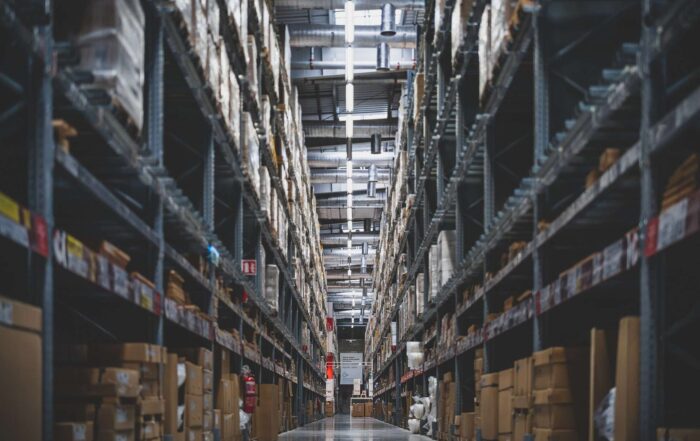Maintenance managers and asset managers play a crucial role in ensuring operational efficiency, minimizing downtime, and maximizing asset performance. To achieve these goals, it is essential to stay updated on the latest trends that can drive success through Enterprise Asset Management (EAM) and Asset Performance Management (APM). While there are many more, in this blogpost, we single out and explore three key trends that are reshaping the maintenance and asset management landscape.
Trend 1: Predictive Maintenance
Why is predictive maintenance a trend?
Technological advancements and increased connectivity have led to a significant rise in data-driven decision making. Predictive maintenance leverages this trend by utilizing data from various sources, such as sensors and equipment monitoring systems and to predict and prevent failures before they occur. This proactive approach reduces unplanned downtime, improves productivity, extends asset lifetime, enhances operational efficiency, ensures safety, and optimizes maintenance efficacy.
Why should you care?
Implementing these practices can bring substantial benefits to your organization. By reducing unplanned downtime, you can avoid costly production losses and maintain a smooth workflow. Additionally, optimized maintenance scheduling can improve asset performance and extend their lifespan, resulting in significant cost savings. Furthermore, enhanced operational efficiency and improved safety measures contribute to an overall increase in productivity, compliance to rules and regulations and employee satisfaction.
Get inspired:
Read more about how this oil supermajor saves millions of dollars with predictive maintenance
Trend 2: Cloud-Based Maintenance Management
Why is cloud-based maintenance management a trend?
Advancements in cloud technology and the rise of the Internet of Things (IoT) have revolutionized the way maintenance management is conducted. Cloud-based solutions allow for seamless integration, connectivity, and real-time accessibility across multiple devices and locations.
Why is cloud-based maintenance management a trend?
Cloud-based maintenance management offers several advantages over traditional on-premises solutions. Firstly, it is more cost-effective, eliminating the need for large upfront investments in hardware and infrastructure. Secondly, the flexibility and accessibility of cloud-based systems enable the team to work from any device, anywhere, ensuring real-time monitoring and decision-making capabilities. Additionally, scalability across different sites ensures consistency in maintenance practices and data management. Furthermore, cloud-based solutions facilitate connectivity and data-driven decision making, enabling better insights for optimized maintenance strategies. Lastly, cloud-based maintenance management can offer enhanced security measures and data protection protocols to ensure the safety and integrity of maintenance data.
Get inspired:
Global deployment of EAM system increases maintenance maturity
Trend 3: The Workforce 4.0
Why is the Workforce 4.0 a trend?
This term indicates the need for the industrial workforce to adapt to the changes that digital transformation is bringing to their work. It emphasizes the importance of leveraging technology to enhance productivity, efficiency, collaboration and innovation in the workplace. As a result, roles and responsibilities are transforming, new jobs are added to the teams (e.g. data scientists) and employees are asked to upskill, and in some cases reskill, to stay on top of the developments.
Why should you care?
People are pivotal, so investing in the Workforce 4.0 and adapting to the changing job landscape is vital for long-term success. By providing employees with the necessary training and upskilling opportunities, organizations can harness the full potential of new technologies. The democratization of knowledge through collaborative platforms helps solve the problem of tribal knowledge and ensures a smooth knowledge transfer within the organization.
Moreover, creating an engaging and fulfilling work environment for the younger generation improves employee retention and attracts new talent. Having the workforce able to adapt to the new way of working quickly increases employee efficiency. This enables companies to cope with understaffing challenges. Lastly, with the influence of connectivity, the new way of working promotes internal collaboration within teams and across disciplines. This fosters innovation and drives continuous improvement.
Get inspired:
Maintenance excellence program for Victrex
Conclusion
As maintenance managers and asset managers in industrial companies, embracing the latest trends in EAM and APM is crucial for achieving operational excellence and staying competitive. Trends such as predictive maintenance and cloud-based maintenance management can only be fully utilized if the workforce (4.0) is able to get the most out of the systems, tools and data. Deploying EAM and APM solutions well and realizing internal adoption quickly and robustly is essential for lasting success.
MaxGrip & IFS
The content of this blogpost was previously presented by Christian Tinajero, MaxGrip’s VP Americas during IFS Connect North America in June 2023. MaxGrip joined the IFS Global Partner Network in that same month. MaxGrip’s domain expertise, change management skills and proven track record in Asset Performance Management will forge new market opportunities in IFS’s EAM business unit.
📰 Download free whitepaper report of Industry Leaders Round Table
Get inspired
The negative impact of unplanned downtime on the bottom line is significant. This article offers advice on how to minimize your downtime.
Media interview with client TenneT about the harmonization of the (onshore and offshore) asset management.
Learn why kitting is important for an efficient MRO strategy, how it helps to increase wrench time and reduce costs.




